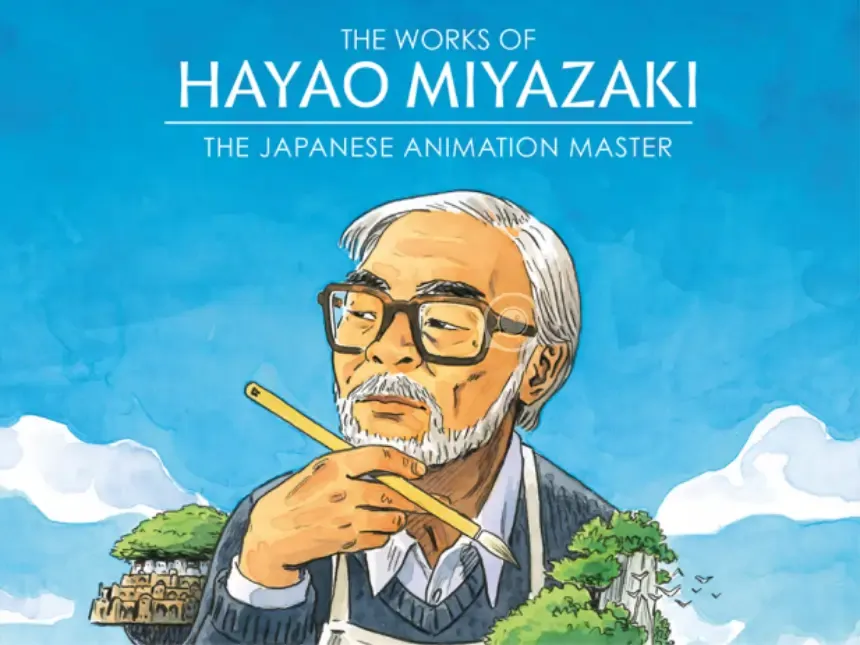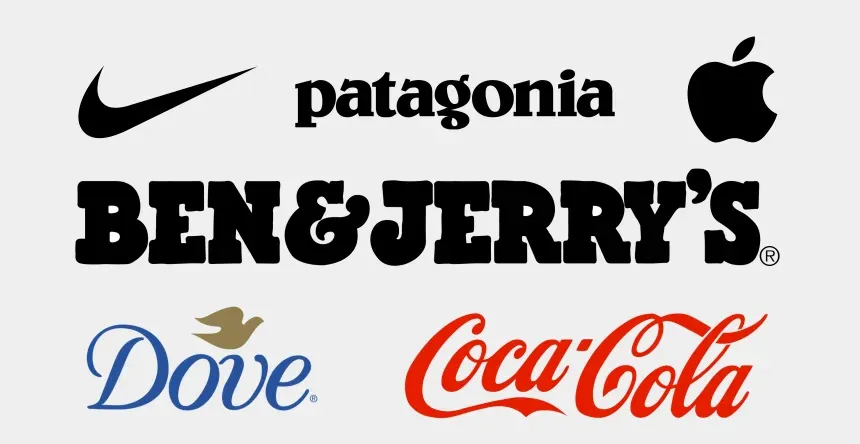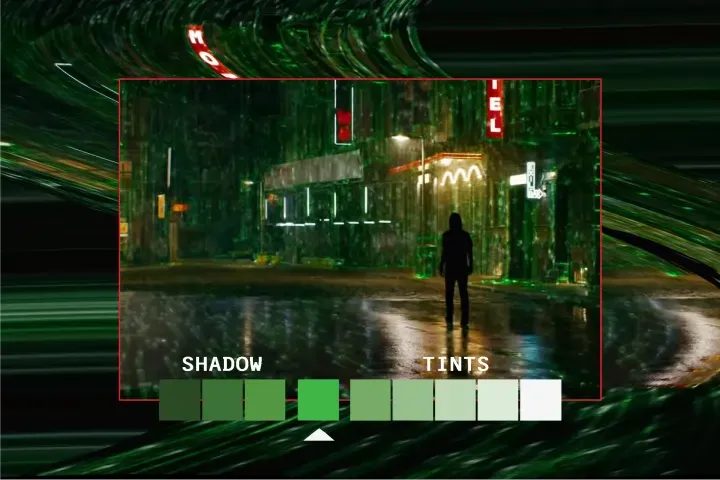Art of Cinema: Insights from Influential Filmmakers
guides inspiration learnFilm is not merely entertainment; it's an art form capable of reflecting society, challenging our perceptions, and sparking profound introspection. This power is amplified by the visionary directors who push the boundaries of cinematic expression.
From the master of suspense, Alfred Hitchcock, to the Japanese auteur Akira Kurosawa, these filmmakers have not only crafted unforgettable films but also shaped the very language of cinema.
Learning from the Masters: Insights from Influential Film Directors
This article will explore the lives and works of these influential figures, analyzing their unique styles, examining their impact on the industry, and exploring the enduring legacy of their cinematic masterpieces.
Wes Anderson
Wes Andersonis an American filmmaker, writer, and producer known for his distinctive visual style. His films often feature pastel color palettes, symmetrical compositions, and unique typography and animation.
Anderson's signature style makes his films instantly recognizable. He frequently employs stop-motion animation techniques, as seen in films like "Fantastic Mr. Fox" and "Isle of Dogs". Additionally, he often collaborates with the same ensemble cast, including Bill Murray, Owen Wilson, and Jason Schwartzman.
Wes Anderson's films often explore themes of family, friendship, and disillusionment. He also employs absurd humor and satire to critique modern society.
Characteristics of The Film
Anderson's films are characterized by:
- Unique Visual Style:Anderson's films are instantly recognizable for their distinctive visual style, characterized by symmetrical compositions, pastel color palettes, and the use of unique fonts and animation.
- Whimsical and Absurdist Humor:Anderson's films often employ whimsical and absurd humor, creating a unique and often offbeat cinematic experience.
Some of Wes Anderson's most famous films include:
- Bottle Rocket (1996)
- Rushmore (1998)
- The Royal Tenenbaums (2001)
- The Life Aquatic with Steve Zissou (2004)
- The Darjeeling Limited (2007)
- Fantastic Mr. Fox (2009)
- Moonrise Kingdom (2012)
- The Grand Budapest Hotel (2014)
- Isle of Dogs (2018)
- The French Dispatch (2021)
Wes Anderson's films have garnered critical acclaim and a dedicated following. He is often praised for his creativity, visual style, and ability to create unique and compelling characters.
Awards
Some of the awards Wes Anderson has won include:
- Academy Award for Best Live Action Short Film for The Fantastic Mr. Fox (2009)
- BAFTA Award for Best Animated Film for Fantastic Mr. Fox (2009)
- Golden Globe Award for Best Animated Feature Film for Fantastic Mr. Fox (2009)
Wes Anderson is one of the most influential filmmakers of his generation. His films have inspired countless people and have become cultural touchstones.
Tim Burton
Tim Burton is an American filmmaker, screenwriter, and producer known for his gothic, dark fantasy, and often stop-motion animated films. His distinctive visual style, characterized by exaggerated imagery, dark humor, and eccentric characters, has earned him a devoted following.
Burton's films often explore themes of alienation, identity, and the fear of anything that differs from the norm. His characters are frequently outsiders or unconventional individuals who struggle to fit into society.
Characteristics of The Film
Burton's films are characterized by:
- Gothic and Fantastical Imagery:Burton's films are characterized by their gothic and fantastical imagery, often featuring dark, distorted characters and a macabre sense of humor.
- Exploration of the Outsider:Burton's films often explore the themes of alienation and the struggles of individuals who don't fit into society.
Awards
Some of Tim Burton's most famous films include:
- Pee-wee's Big Adventure (1985)
- Beetlejuice (1988)
- Batman (1989)
- Edward Scissorhands (1990)
- The Nightmare Before Christmas (1993)
- Ed Wood (1994)
- Sweeney Todd: The Demon Barber of Fleet Street (2007)
- Frankenweenie (2012)
- Miss Peregrine's Home for Peculiar Children (2016)
Burton's films have garnered both critical acclaim and commercial success. He has been praised for his creativity, visual style, and ability to create unique and memorable characters.
Some of the awards Tim Burton has won include:
- BAFTA Award for Best Animated Film for The Corpse Bride (2005)
- Saturn Award for Best Director for Batman (1989)
- Saturn Award for Best Writing for Edward Scissorhands (1990)
Quentin Tarantino
Quentin Tarantino is an American filmmaker known for his distinctive style characterized by sharp dialogue, nonlinear narratives, homage to genre cinema, and a blend of violence and pop culture references.
Tarantino's films often feature complex plots, morally ambiguous characters, and stylized violence. He is known for his use of pop culture references, including film, music, and literature, to create a unique cinematic experience.
Characteristics of The Film
Tarantino's films are characterized by:
- Stylized Violence:Tarantino's films are known for their stylized violence, often depicted in a graphic yet stylized manner. He is a master of creating suspense and tension through dialogue and carefully choreographed action sequences.
- Pop Culture References:Tarantino's films are filled with pop culture references, drawing inspiration from films, music, and literature to create a unique and eclectic cinematic experience.
Some of Quentin Tarantino's most famous films include:
- Reservoir Dogs (1992)
- Pulp Fiction (1994)
- Jackie Brown (1997)
- Kill Bill: Vol. 1 (2003)
- Kill Bill: Vol. 2 (2004)
- Inglourious Basterds (2009)
- Django Unchained (2012)
- Once Upon a Time in Hollywood (2019)
Tarantino's films have garnered critical acclaim and a dedicated following. He has been praised for his originality, creativity, and ability to push the boundaries of filmmaking.
Awards
Some of the awards Quentin Tarantino has won include:
- Academy Award for Best Original Screenplay for Pulp Fiction (1994) and Inglourious Basterds (2009)
- Palme d'Or at the Cannes Film Festival for Pulp Fiction (1994)
Alfred Hitchcock
Alfred Hitchcock, often referred to as the "Master of Suspense," is arguably one of the most influential filmmakers of all time. His career spanned decades, leaving an indelible mark on the thriller genre and cinema as a whole.
Characteristics of The Film
Hitchcock's films are characterized by:
- Suspenseful Storytelling:Hitchcock's films are characterized by their ability to build suspense slowly and methodically. He was a master of using techniques like point-of-view shots, the "MacGuffin" (a plot device that drives the narrative but is ultimately unimportant), and unexpected plot twists to keep audiences on the edge of their seats.
- Psychological Exploration:Hitchcock's films often delved into the darker aspects of human psychology, exploring themes of obsession, guilt, and the fragility of the human psyche.
Hitchcock's mastery lay in his ability to build suspense. He employed a variety of techniques, including:
- MacGuffin:A plot device that drives the narrative but holds little intrinsic importance, keeping the audience engaged without revealing the true stakes.
- Point of View Shots:Placing the audience in the protagonist's perspective, heightening tension and empathy.
- The "Wrong Man" Trope:Accusing an innocent person of a crime, creating a sense of paranoia and mistrust.
- Iconic Musical Scores:Composing or selecting music that amplified the mood and heightened suspense.
Hitchcock's films are renowned for their psychological depth, exploring themes of obsession, guilt, and the fragility of the human psyche. He often cast actors like James Stewart, Ingrid Bergman, and Cary Grant, known for their relatable personas and ability to convey vulnerability.
Some of Hitchcock's most celebrated films include:
- Psycho (1960):A groundbreaking thriller that redefined horror cinema with its iconic shower scene and exploration of voyeurism.
- Vertigo (1958):A visually stunning and emotionally complex film about obsession and the unreliability of perception.
- Rear Window (1954):A suspenseful tale of voyeurism and murder, confined to a single apartment setting.
- North by Northwest (1959):A classic example of the "wrong man" trope, featuring a thrilling chase across the American landscape.
- The Birds (1963):A chilling exploration of nature's terror and the fragility of civilization.
Awards
Some of the awards Alfred Hitchcock has won include:
- Academy Awards: 5 Nominations for Best Director
- Irving G. Thalberg Memorial Award (for consistent high quality of production)
- AFI Life Achievement Award
- Directors Guild of America Award
- Golden Globe Cecil B. DeMille Award
- BAFTA Fellowship
Hitchcock's impact on cinema is immeasurable. His innovative techniques and storytelling mastery continue to inspire filmmakers today. He remains a quintessential figure in film history, and his films are timeless classics that continue to captivate audiences worldwide.
Hayao Miyazaki
Hayao Miyazaki is a legendary Japanese animator, filmmaker, and manga artist renowned for his stunning visuals, imaginative storytelling, and profound messages. He co-founded Studio Ghibli, a renowned animation studio responsible for some of the most beloved animated films of all time.
[Image of Hayao Miyazaki, filmmaker]
Characteristics of The Film
Miyazaki's films are characterized by:
- Breathtaking Visuals:His films are known for their exquisite hand-drawn animation, rich colors, and detailed backgrounds, creating a visually stunning and immersive experience.
- Environmental Themes:Many of his films explore the relationship between humans and nature, often portraying nature as a powerful and benevolent force.
- Strong Female Characters:Miyazaki's films feature strong and independent female protagonists who often defy traditional gender roles.
- Themes of Hope and Resilience:Despite often dealing with dark themes, his films ultimately convey a message of hope, resilience, and the importance of protecting the environment.
Some of Miyazaki's most celebrated films include:
- Spirited Away (2001):A coming-of-age story about a young girl who enters a spirit world, winning an Academy Award for Best Animated Feature.
- Princess Mononoke (1997):An epic tale exploring the conflict between humans and nature, featuring stunning visuals and a complex narrative.
- My Neighbor Totoro (1988):A heartwarming and whimsical story about two young sisters who encounter magical creatures in the forest.
- Howl's Moving Castle (2004):A fantasy adventure featuring a young woman who is transformed into an old lady and must break a powerful curse.
Miyazaki's impact on animation is immeasurable. His films have captivated audiences worldwide, inspiring countless filmmakers and artists. His work continues to resonate with viewers of all ages, reminding us of the importance of imagination, environmental protection, and the enduring power of human spirit.
While Hayao Miyazaki's films have achieved immense international success, including in Hollywood, he has primarily focused his career on creating films within Japan and through Studio Ghibli.
There have been instances of Hollywood interest in adapting his works, but Miyazaki himself has been cautious about such adaptations, preferring to maintain creative control over his stories.
However, his influence on animation worldwide, including Hollywood, is undeniable. His films have inspired countless filmmakers and artists, and their impact on the global animation landscape is significant.
David Lynch
David Lynch is an American filmmaker, visual artist, and musician known for his surreal, dreamlike, and often disturbing films that explore the darker side of the human psyche.
[Image of David Lynch, filmmaker]
Characteristics of The Film
Lynch's films are characterized by:
- Surrealism and Dream Logic:His narratives often defy conventional logic, incorporating dream sequences, bizarre imagery, and unsettling juxtapositions.
- Exploration of the Subconscious:Lynch's films delve into the depths of human psychology, exploring themes of fear, desire, and the subconscious mind.
- Disturbing Atmospheres:His films often create a sense of unease and unease, blurring the lines between reality and nightmare.
- Unique Visual Style:Lynch's films are visually distinctive, featuring striking compositions, unconventional camera angles, and a strong emphasis on atmosphere and mood.
Some of Lynch's most celebrated films include:
- Eraserhead (1977):A surreal and disturbing film about a young father struggling to cope with the challenges of parenthood.
- Blue Velvet (1986):A neo-noir thriller that explores the dark underbelly of a seemingly idyllic small town.
- Mulholland Drive (2001):A neo-noir mystery that unfolds like a dream, blurring the lines between reality and fantasy.
- Twin Peaks (TV series, 1990-1991, 2017):A cult classic television series that blends mystery, horror, and surrealism.
Lynch's films have garnered both critical acclaim and a dedicated cult following. He is considered one of the most innovative and influential filmmakers of his generation, known for his unique vision and ability to push the boundaries of cinematic storytelling.
While "Twin Peaks" is often cited as one of David Lynch's most celebrated works, it's not necessarily considered his "best" film by all critics and fans. Lynch's filmography is diverse, and opinions on his best work vary greatly.
Some argue that "Twin Peaks" is his best due to its:
- Cultural Impact:The series transcended television, becoming a cultural phenomenon that influenced fashion, music, and popular culture in general.
- Unique Blend of Genres:It masterfully blended mystery, horror, comedy, and surrealism, creating a unique and unforgettable viewing experience.
- Enduring Popularity:Decades after its initial run, "Twin Peaks" continues to captivate audiences and inspire new generations of filmmakers.
- Exploration of Lynchian Themes:The series delved deeply into Lynch's signature themes of good vs. evil, the subconscious, and the unsettling nature of reality.
However, other films like "Mulholland Drive," "Blue Velvet," and "Eraserhead" also have strong claims for the title of "best." These films showcase Lynch's distinctive style, innovative storytelling, and ability to create unsettling and thought-provoking cinematic experiences.
Ultimately, the "best" David Lynch film is subjective and depends on individual preferences. Each of his major works offers a unique and rewarding viewing experience, and exploring his filmography is a journey of discovery for any cinephile.
Awards
Here are some of his notable accolades:
- Academy Awards: Honorary Academy Award (for lifetime achievement)
- Palme d'Or at the Cannes Film Festival for "Wild at Heart"
- Golden Lion for Lifetime Achievement at the Venice Film Festival
- Directors Guild of America Award
- César Award (French equivalent of the Academy Award) for Best Foreign Film (multiple wins)
Terrence Malick
Terrence Malick is an American filmmaker renowned for his poetic and introspective style, often exploring themes of nature, spirituality, and the human condition.
[Image of Terrence Malick, filmmaker]
Characteristics of The Film
Malick's films are characterized by:
- Stunning Visuals:His films are known for their breathtaking cinematography, often featuring sweeping landscapes and intimate close-ups.
- Poetic and Evocative Narration:Malick frequently employs voice-over narration, often in the form of philosophical musings or internal monologues.
- Focus on Nature:Nature is often a central character in Malick's films, portrayed with reverence and awe.
- Exploration of Existential Themes:His films delve into profound questions about life, death, love, and the meaning of existence.
Some of Malick's most celebrated films include:
- Badlands (1973):A gritty and unconventional road movie that explores the dark side of the American dream.
- Days of Heaven (1978):A visually stunning and poetic film about love, betrayal, and the transience of life.
- The Thin Red Line (1998):An epic war film that explores the human cost of conflict and the beauty of nature.
- The Tree of Life (2011):A visually stunning and ambitious film that explores the origins of the universe and the human experience.
Malick's films are often divisive, but his unique and poetic style has garnered a dedicated following. He is considered one of the most innovative and influential filmmakers of his generation, known for his ability to capture the beauty and mystery of the human experience.
Stanley Kubrick
Stanley Kubrick is widely regarded as one of the greatest and most influential filmmakers of all time. His films are known for their meticulous attention to detail, innovative cinematography, thought-provoking themes, and a distinctive blend of genres.
[Image of Stanley Kubrick, filmmaker]
Characteristics of The Film
Kubrick's films are characterized by:
- Perfectionism:He was known for his meticulous approach to filmmaking, often spending years on pre-production, shooting, and editing.
- Genre-Bending:Kubrick seamlessly blended genres, creating unique and unforgettable cinematic experiences.
- Exploration of Dark Themes:His films often explored dark and disturbing themes, such as violence, war, and the human condition.
- Iconic Imagery:Kubrick's films are filled with iconic images that have become ingrained in popular culture.
Some of Kubrick's most celebrated films include:
- 2001: A Space Odyssey (1968):A groundbreaking science fiction film that explored the origins of humanity and the future of space exploration.
- The Shining (1980):A chilling horror film that explores the psychological breakdown of a writer isolated in a haunted hotel.
- Dr. Strangelove or: How I Learned to Stop Worrying and Love the Bomb (1964):A dark satire about the Cold War and the threat of nuclear annihilation.
- A Clockwork Orange (1971):A controversial film that explores themes of violence, free will, and the nature of good and evil.
- Full Metal Jacket (1987):A gritty and unflinching portrayal of the Vietnam War.
Kubrick's impact on cinema is immeasurable. His films continue to inspire and challenge audiences, and his legacy as one of the greatest filmmakers of all time is secure.
Ingmar Bergman
Ingmar Bergman was a Swedish filmmaker, screenwriter, and theatre director renowned for his profoundly personal and introspective films that explored the depths of the human psyche.
[Image of Ingmar Bergman, filmmaker]
Characteristics of The Film
Bergman's films are characterized by:
- Psychological Depth:His films delve into the complexities of human emotions, exploring themes of faith, guilt, mortality, and the search for meaning.
- Existential Themes:Bergman's work often grapples with existential questions about life, death, and the human condition.
- Stark Visual Style:His films are often characterized by stark visuals, minimalist sets, and a focus on intense close-ups.
- Strong Female Characters:Bergman's films often feature strong and complex female characters who grapple with issues of identity and independence.
Some of Bergman's most celebrated films include:
- The Seventh Seal (1957):A medieval allegory about a knight's encounter with Death during the Black Plague.
- Wild Strawberries (1957):A road trip film that explores the regrets and anxieties of an aging professor.
- Persona (1966):A psychological drama that explores the complexities of identity and the relationship between an actress and her nurse.
- Fanny and Alexander (1982):A nostalgic and semi-autobiographical tale about a young boy's coming-of-age in a loving family.
Bergman's impact on cinema is immeasurable. His films continue to inspire and challenge audiences, and his legacy as one of the greatest filmmakers of all time is secure.
Ingmar Bergman is called the "maestro of Swedish cinema" due to his profound and lasting impact on Swedish and global filmmaking.
Here's why:
- Pioneering Artist:He elevated Swedish cinema to international prominence, introducing a unique and introspective style that resonated with audiences worldwide.
- Prolific and Influential:Bergman's extensive body of work, encompassing numerous films and stage productions, has deeply influenced generations of filmmakers.
- Master of Psychological Drama:His films delved into the complexities of the human psyche with unparalleled depth and artistry, exploring themes of faith, guilt, mortality, and the search for meaning.
- Cultural Icon:He became a cultural icon, not just in Sweden but globally, representing the artistic and intellectual spirit of the nation.
Bergman's influence extends beyond Swedish cinema. His work has inspired filmmakers across the globe, and his films continue to be studied and admired for their artistic merit and enduring relevance.
Akira Kurosawa
Akira Kurosawa is undeniably one of the most influential filmmakers of all time, often referred to as the "Citizen Kane of Japan."
Here's why:
- Pioneering Japanese Cinema:Kurosawa elevated Japanese cinema to new heights, introducing innovative storytelling techniques and a visually dynamic style that captivated global audiences.
- Masterful Storytelling:His films are known for their complex narratives, compelling characters, and profound exploration of universal themes like honor, loyalty, and the human condition.
- Visual Innovation:Kurosawa pioneered many cinematic techniques, including dynamic camera movements, innovative editing, and the use of long takes.
- Global Impact:His films, such as "Seven Samurai" and "Rashomon," have had a profound impact on filmmakers worldwide, inspiring countless directors and influencing the evolution of cinema.
Kurosawa's influence extends far beyond Japan. He is considered a true master of cinema, and his films continue to be studied, admired, and enjoyed by audiences around the world.
Characteristics of The Film
Absolutely! Let's delve deeper into "Seven Samurai," one of Akira Kurosawa's most celebrated and influential films.
A Masterpiece of Epic Storytelling:
- Plot:"Seven Samurai" tells the story of a 16th-century Japanese village terrorized by bandits. The villagers, facing imminent danger, hire seven masterless samurai (ronin) to protect them. The film chronicles the samurai's training of the villagers, their preparations for the inevitable battle, and the ultimate showdown against the bandits.
- Character Development:Kurosawa masterfully develops each of the seven samurai, giving them distinct personalities, motivations, and fighting styles. The interactions and dynamics between the samurai, as well as their relationships with the villagers, add depth and complexity to the narrative.
- Visual Spectacle:The film is renowned for its stunning visuals, including sweeping landscapes, dynamic camera movements, and meticulously choreographed battle sequences. Kurosawa's innovative use of camera angles and editing techniques further enhances the film's visual impact.
- Themes of Honor, Loyalty, and Sacrifice:"Seven Samurai" explores profound themes of honor, loyalty, sacrifice, and the value of human life. The samurai, despite their own personal struggles and flaws, ultimately choose to fight for the villagers, demonstrating a sense of duty and selflessness.
- Cultural Impact:The film's influence on cinema is undeniable. It has been remade numerous times, most notably as "The Magnificent Seven" (1960) in Hollywood. Its impact on the action genre and filmmaking in general cannot be overstated.
"Seven Samurai" is a testament to Kurosawa's mastery of storytelling, his innovative filmmaking techniques, and his ability to create characters and narratives that resonate with audiences across cultures and generations.
Here are a few other Kurosawa films that have captivated audiences and continue to be celebrated:
- Rashomon (1950):This film is famous for its innovative storytelling technique, exploring the subjective nature of truth through multiple, conflicting testimonies of a murder. It introduced the concept of "Rashomon effect," which refers to contradictory versions of a single event.
- Ikiru (1952):This poignant drama tells the story of a bureaucrat who, faced with a terminal illness, decides to make the most of his remaining time by building a playground for children. "Ikiru" is celebrated for its humanistic message and its exploration of the meaning of life.
- Throne of Blood (1957):This film is a powerful and visually stunning adaptation of Shakespeare's Macbeth, set in feudal Japan. It features iconic imagery, such as the "spider web" scene, and explores themes of ambition, betrayal, and the corrupting influence of power.
- Ran (1985):This epic film, based on Shakespeare's King Lear, is a visually spectacular and emotionally devastating portrayal of a powerful warlord's descent into madness. "Ran" is renowned for its stunning cinematography, elaborate sets, and powerful performances.
These films, along with many others in Kurosawa's filmography, have captivated audiences with their powerful storytelling, innovative techniques, and enduring themes. They continue to be studied and admired by filmmakers and cinephiles worldwide, solidifying Kurosawa's legacy as one of the greatest filmmakers of all time.
Highlight
Of the filmmakers we discussed, Alfred Hitchcockand Stanley Kubrickare widely considered to be among the most influential and celebrated figures in film history. They are often mentioned in discussions of the greatest filmmakers of all time and their work continues to be studied and admired by filmmakers and cinephiles worldwide.
While there isn't a single, universally recognized "Hall of Fame" for filmmakers, Hitchcock and Kubrick are often cited as icons and their contributions to cinema are undeniable.
I hope this exploration of these influential filmmakers has been insightful. Each of them, in their own unique way, pushed the boundaries of cinematic storytelling, leaving an indelible mark on the art form. Their films continue to inspire and entertain audiences worldwide, serving as a testament to the power of film to move, challenge, and inspire.
I encourage you to continue exploring the world of cinema and discovering the many talented filmmakers who have shaped the art form as we know it today.
Thank you for reading!
























